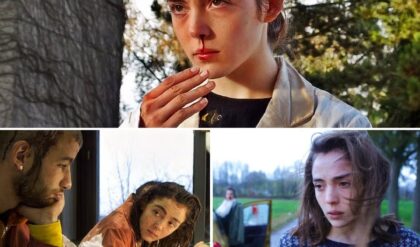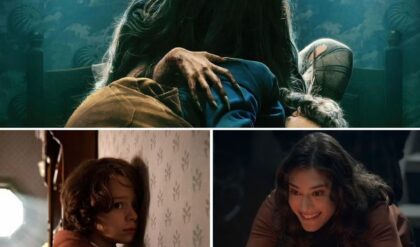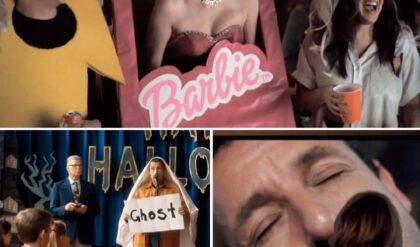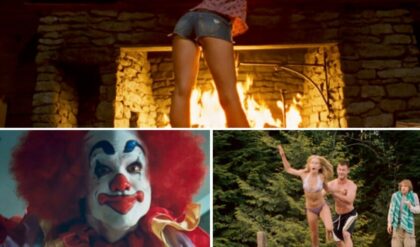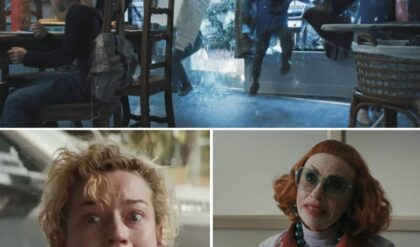😡 What if a blizzard trapped EIGHT of the most DESPICABLE, RACIST, BLOODTHIRSTY strangers in one tiny cabin… and the only way out is through a bloodbath of lies, poison, and exploding heads?
This ultra-tense, laugh-out-loud WRONG Western thriller is making Netflix viewers squirm, cheer for monsters, and question their morals—because EVERY character is the absolute WORST, yet you CAN’T stop rooting for the chaos! 🔫❄️💀
Over-the-top gore that’ll make you gag one second and cackle the next… it’s the violent masterpiece blowing up streaming charts RIGHT NOW. People are calling it “Tarantino’s sickest genius”—and once that coffee gets spiked, there’s NO turning back.
Dare to spend 3 hours with pure evil? Hit play if you can handle the betrayal… but don’t blame us when you’re screaming at your screen! 😈
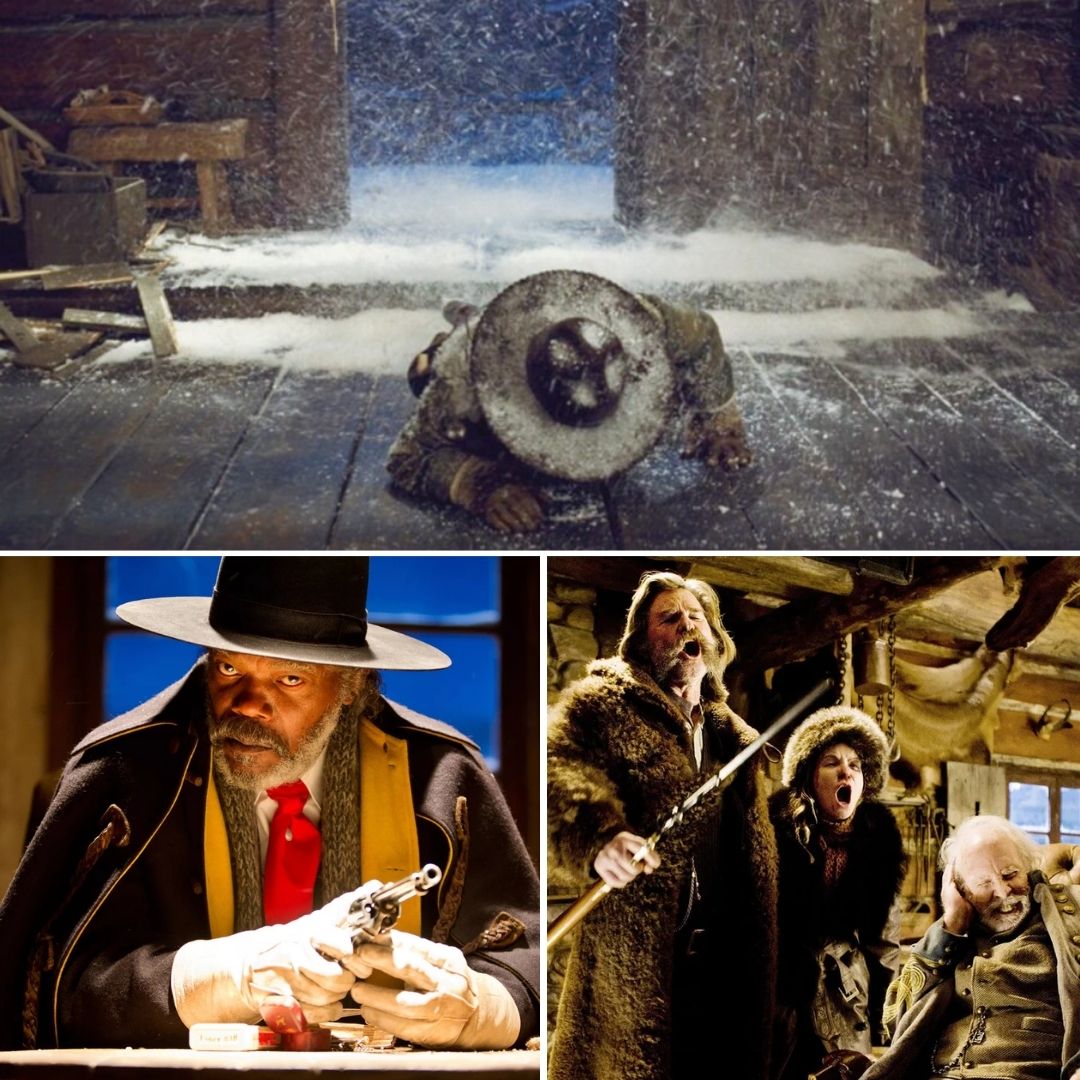
Quentin Tarantino’s 2015 Western epic The Hateful Eight has staged a massive comeback on Netflix, clawing its way into the platform’s top charts in November 2025 and leaving viewers hooked on a twisted tale where every single character is utterly reprehensible—yet impossibly compelling. This R-rated bloodbath, clocking in at nearly three hours, proves once again that Tarantino’s signature blend of razor-sharp dialogue, dark humor, and explosive violence remains catnip for streaming audiences craving something unapologetically brutal.
Filmed in glorious 70mm Panavision for its theatrical roadshow release, The Hateful Eight transports viewers to a post-Civil War Wyoming blizzard, where a stagecoach carrying bounty hunter John “The Hangman” Ruth (Kurt Russell) and his foul-mouthed prisoner Daisy Domergue (Jennifer Jason Leigh) seeks shelter at Minnie’s Haberdashery. They’re joined by fellow bounty hunter Major Marquis Warren (Samuel L. Jackson), soon-to-be sheriff Chris Mannix (Walton Goggins), and a ragtag group of strangers: a British hangman (Tim Roth), a cowboy (Michael Madsen), a Confederate general (Bruce Dern), and a quiet Mexican caretaker (Demián Bichir).
What unfolds is a pressure-cooker whodunit that deliberately echoes John Carpenter’s The Thing, trapping these eight hateful souls in a single location where paranoia festers like an open wound. Guns are drawn over spilled coffee, racist tirades fly freely, and backstories drip out like blood from a fresh gunshot. Tarantino structures the film like a stage play divided into chapters, building unbearable tension through brooding monologues and simmering distrust before unleashing the kind of over-the-top carnage that’s become his trademark.
The genius—and controversy—of The Hateful Eight lies in its ensemble of villains. There’s no traditional hero here. Ruth is a sadistic brute who punches Daisy’s face into pulp for sport. Warren is a cunning manipulator with a penchant for psychological torture. Mannix is a proud ex-Confederate racist. Even the “quiet” ones harbor deadly secrets. Yet viewers find themselves oddly invested, laughing at the wrong moments and rooting for survival in a game where everyone deserves the noose.
Tarantino leans hard into post-Civil War tensions, using the haberdashery as a microcosm for America’s lingering racial divides. Warren’s Lincoln letter becomes a flashpoint for debates on truth and forgery, while Mannix’s Lost Cause rhetoric clashes violently with Northern bounty hunters. It’s ugly, uncomfortable stuff—but delivered with the director’s inimitable wit. Lines like Jackson’s infamous “domergue’s got a bullet comin'” or Goggins’ manic rants turn horror into hilarity, forcing audiences to confront why they’re chuckling at such depravity.
Violence erupts in the film’s second half like a dam breaking. What starts with poisoned coffee escalates to point-blank shootings, disembowelments, and a finale soaked in more blood than a slaughterhouse floor. Practical effects reign supreme—no CGI shortcuts here—with squibs exploding in slow-motion glory and Ennio Morricone’s Oscar-nominated score ratcheting up the dread. The extended Netflix cut restores four minutes of gore trimmed for theaters, including extended vomit scenes and additional brutality that left test audiences reeling.
Critics were divided upon release. Some hailed it as Tarantino’s most ambitious work since Pulp Fiction, praising the claustrophobic tension and Leigh’s fearless performance—she earned a Best Supporting Actress Oscar nod for enduring beatings that left her real-life bruised. Others slammed the runtime and repetitive dialogue. Rotten Tomatoes settled at a solid 75%, with consensus calling it “a deliciously vicious all-star chamber piece.”
Box office told a different story. The $44 million production grossed $155 million worldwide, proving Tarantino’s draw even for three-hour Westerns in a superhero-dominated era. Its Ultra Panavision 70mm presentation—complete with overture and intermission—became a cinematic event, screening in only 100 theaters but generating massive buzz.
Netflix’s acquisition has breathed new life into the film. In 2025, amid a drought of original adult thrillers, The Hateful Eight surges thanks to algorithmic pushes to fans of Yellowstone, Django Unchained, or Fargo. Social media explodes with reaction videos: TikToks dissecting the “big dick” monologue, Reddit threads debating who poisoned the coffee, and X posts confessing, “I shouldn’t like these people but damn if I don’t want them to win.”
Tarantino’s influences are worn proudly. Agatha Christie’s And Then There Were None meets Sergio Leone’s spaghetti Westerns, filtered through Reservoir Dogs‘ single-location brutality. The haberdashery set, built on a refrigerated stage in Telluride, Colorado, allowed real snow and freezing conditions that bleed into performances—actors’ breath visible, fingers numb from prop guns.
Standouts abound. Jackson chews scenery as the eloquent killer, delivering monologues with Shakespearean flair. Russell channels John Wayne gone wrong, his mustache practically a character itself. But Leigh steals the show as Daisy, a feral force who spits blood and sings folk songs while plotting murder. Goggins, fresh off Justified, turns Mannix into a manic highlight, his Southern drawl dripping venom and vulnerability.
The film’s legacy grows. It sparked debates on violence in cinema, with some theaters issuing warnings for graphic content. Morricone’s score—his first full Western in decades—won Tarantino’s only Oscar. And in 2025, as Hollywood churns safe franchises, The Hateful Eight reminds us why R-rated originals matter: they provoke, disgust, and entertain without apology.
Streaming has democratized access to Tarantino’s vision. No longer requiring a rare 70mm screening, anyone with Netflix can dive into this blizzard of betrayal. Viewers report binge-watching the extended cut in one sitting, emerging shell-shocked but satisfied. “It’s like Clue on bath salts,” one viral review quips.
As The Hateful Eight dominates Netflix charts, it cements Tarantino’s status as modern cinema’s provocateur-in-chief. In a world of moral ambiguity, this thriller dares you to pick sides among monsters—and love every hateful minute.
Whether you’re a longtime fan or discovering it fresh, buckle up. Once the stagecoach stops at Minnie’s, there’s no escape from the gore, the laughs, or the uncomfortable truth: sometimes the worst people make the best entertainment.
